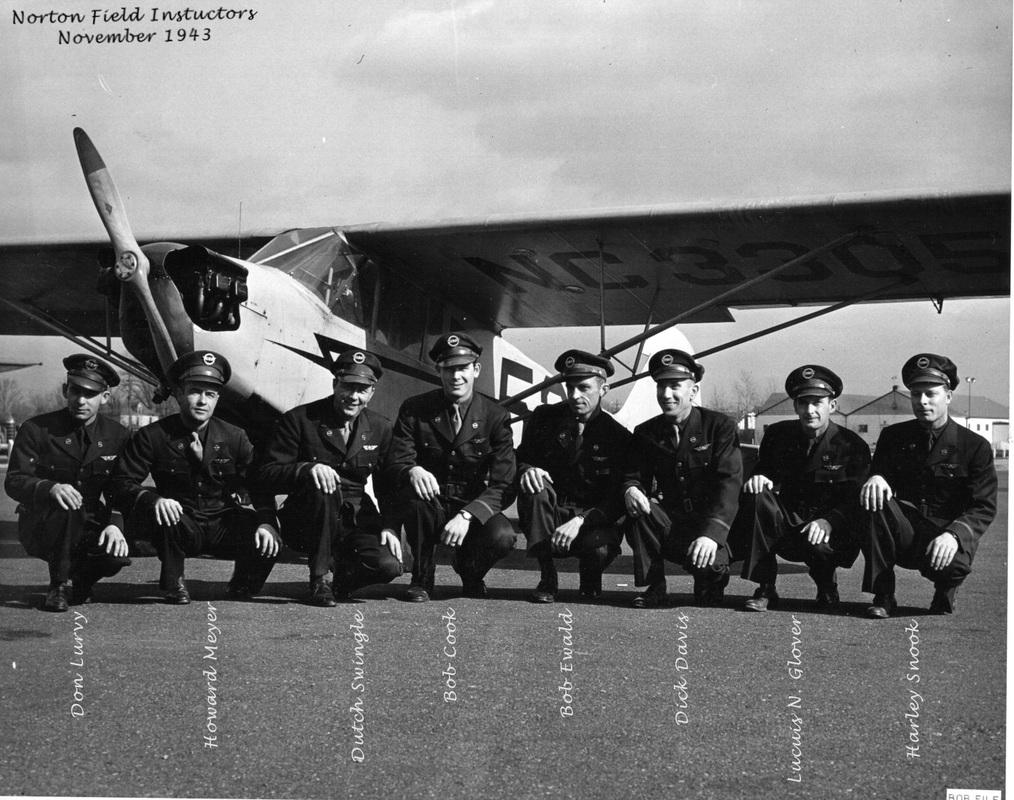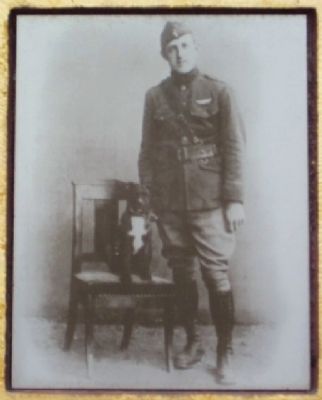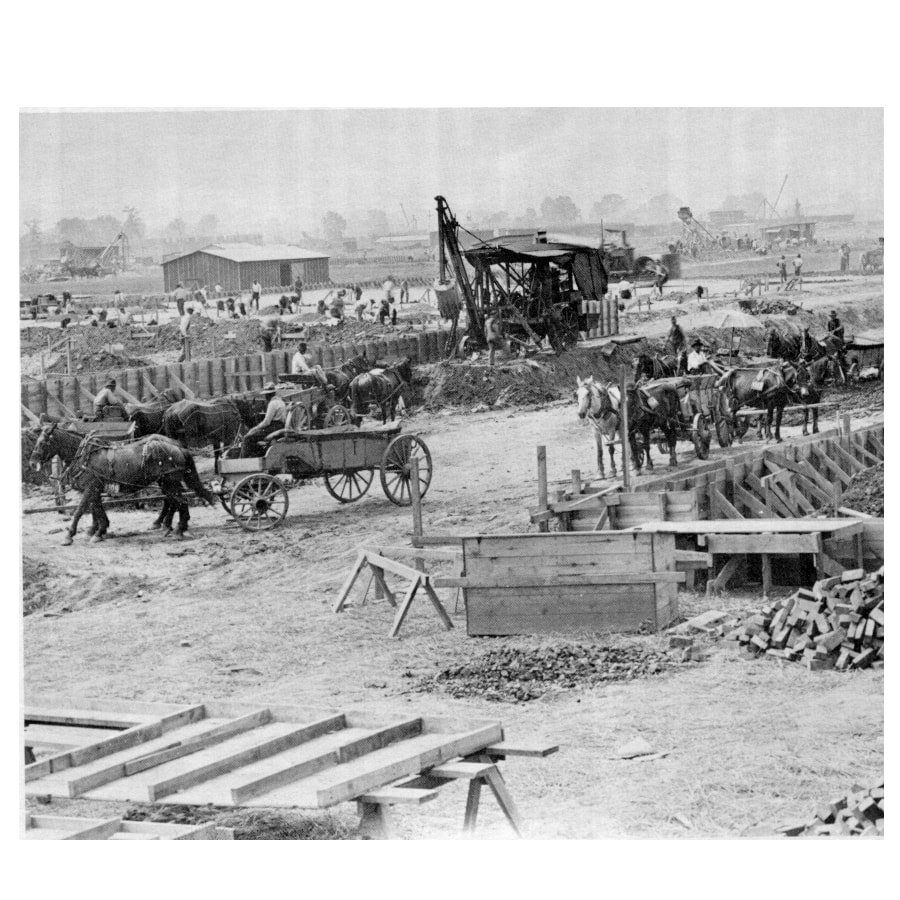Norton Air Field, 1945
"In the 1950s, Whitehall, Ohio was the nation’s fastest growing community"
A Brief History of Whitehall
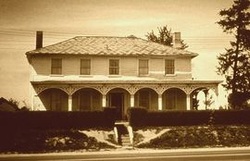
The Whitehall Inn, aka Ye Olde Whitehall Tavern.
In the late 1700's, the area upon which the City sprang was initially among lands that the federal government gave to Canadian refugees who fought for the colonies - - as a reward for their service. Among them was Robert Taylor, from Nova Scotia, who in 1810 received land in central Ohio between the Scioto River and Big Walnut Creek. The township that was incorporated on land east of Alum Creek was named Truro, apparently after Mr. Taylor's home in Nova Scotia.
In 1820, a 156-acre tract in the township was transferred, by decree of President James Monroe, to John Long. He and his wife, Elizabeth, transferred the land in 1821 to John M. Walcutt and his wife, Marilla, who in turn transferred it to George Spencer in 1836, for the sum of $5,000. The transfer document calls the parcel "White Hall, and occupied by J. M. Walcutt." It appears to be the first reference to the area as White Hall. The reason for its naming is uncertain, but could relate to the Palace of Whitehall in the Westminster area of central London. (See Whitehall - Wikipedia) Possible also is that Walcutt and his wife Marilla, migrating from Virginia, adopted it from multiple places there with that name. Names of subsequent owners were Brotherton, Wilson, Brockway. Doney and Hoddy, some of whom bought land surrounding the initial 156 acres to expand the farm.
The exact build date of the original "five-over-four" house that was on the property is unknown, but presumably was between 1821 and 1836 when John and Marilla owned the property. To accommodate guests who arrived by horse, it was expanded at some point with an addition to the rear that approximated the size of the original, and a covered porch was added to its front and east facades. It has been traditionally understood that it served as an inn/tavern that served travelers on the National Road, which was extended through the area in the early 1830s. It also is said to have been known unofficially as "Ye Olde Whitehall Inn/Whitehall Tavern. In the 20th century, the arrival of motor vehicles resulted in the contruction of what were called "tourist cabins" behind the inn, and it became the Whitehall Motel.
The area in and around the farm came to be unofficially known as Whitehall, and a township school built across from the farm in 1923 was named The Whitehall School. The long association of the area to that name led to it being chosen for the village when it incorporated in 1947. The namesake house was razed in 1963 to make way for two apartment buildings.
Prior to the Civil War era, Truro Township resident John T. Ward was a "conductor" who established a stop at his home on the "Underground Railroad" on the National Road/U.S. Route 40, just east of today's Hamilton Road, to aid escaped slaves in their travels north. His hauling business in 1881 evolved into today's E. E. Ward Moving and Storage, which is the nation's oldest African-American owned business. See About - E.E. Ward Moving and Storage (eeward.com)
By the late 19th century, the White Hall Inn/farm was sold to Abram Doney. The interurban railway (1891-1938) established a stop at the Inn, and early maps refer to the stop there as "Doney." At least one other later shows the stop's name as "Crumms," reflecting the name of a nearby landowner (and sometimes spelled Krumm/Krumms).
In 1910, Abram’s son, Samuel "Squire" Doney inherited the entire farm. He had much of it platted into, and sold as, one-acre lots, as the Lowrie Brothers East Broad Street Allotment. The neighborhood that developed became known as " Cedarhurst," and to some is now informally known as “Old Whitehall.” A township elementary school built at its northern edge in 1923 was called Cedar Hurst School (later renamed East Broad Street Elementary.) Just east of Cedarhurst is Glencoe, a neighborhood developed beginning around 1920. At about the same time, the Bernhard's First Addition began to develop just south of Glencoe along U.S. Route 40, between Hamilton and Yearling Roads. The neighborhood includes examples of classic Sears pre-cut "kit" homes available through its catalogs.
After World War I, pilots of military aircraft wanted to continue flying planes for personal use, and leased land from the Pure Oil Company at the southeast corner of East Broad Street and South Yearling Road. The pilots formed the Aero Club of Columbus on farmland initially owned by James and Mary Enlows Lamp - - establishing the first airfield in Central Ohio. It became Norton flying field at the urging of the Aero Club, which lobbied the War Department for its establishment. It was named for WWI pilot Fred W. Norton, an Ohio State University graduate, who was shot down over France in 1918. The airfield eventually was closed and the land sold for development of the Norton Homes subdivision in 1949. See http://www.rawlinsbrothers.org/planes/norton.html and http://www.airfields-freeman.com/OH/Airfields_OH_C.htm It also is the site of the recently-built Whitehall branch of the Columbus Metropolitan Library.
In 1820, a 156-acre tract in the township was transferred, by decree of President James Monroe, to John Long. He and his wife, Elizabeth, transferred the land in 1821 to John M. Walcutt and his wife, Marilla, who in turn transferred it to George Spencer in 1836, for the sum of $5,000. The transfer document calls the parcel "White Hall, and occupied by J. M. Walcutt." It appears to be the first reference to the area as White Hall. The reason for its naming is uncertain, but could relate to the Palace of Whitehall in the Westminster area of central London. (See Whitehall - Wikipedia) Possible also is that Walcutt and his wife Marilla, migrating from Virginia, adopted it from multiple places there with that name. Names of subsequent owners were Brotherton, Wilson, Brockway. Doney and Hoddy, some of whom bought land surrounding the initial 156 acres to expand the farm.
The exact build date of the original "five-over-four" house that was on the property is unknown, but presumably was between 1821 and 1836 when John and Marilla owned the property. To accommodate guests who arrived by horse, it was expanded at some point with an addition to the rear that approximated the size of the original, and a covered porch was added to its front and east facades. It has been traditionally understood that it served as an inn/tavern that served travelers on the National Road, which was extended through the area in the early 1830s. It also is said to have been known unofficially as "Ye Olde Whitehall Inn/Whitehall Tavern. In the 20th century, the arrival of motor vehicles resulted in the contruction of what were called "tourist cabins" behind the inn, and it became the Whitehall Motel.
The area in and around the farm came to be unofficially known as Whitehall, and a township school built across from the farm in 1923 was named The Whitehall School. The long association of the area to that name led to it being chosen for the village when it incorporated in 1947. The namesake house was razed in 1963 to make way for two apartment buildings.
Prior to the Civil War era, Truro Township resident John T. Ward was a "conductor" who established a stop at his home on the "Underground Railroad" on the National Road/U.S. Route 40, just east of today's Hamilton Road, to aid escaped slaves in their travels north. His hauling business in 1881 evolved into today's E. E. Ward Moving and Storage, which is the nation's oldest African-American owned business. See About - E.E. Ward Moving and Storage (eeward.com)
By the late 19th century, the White Hall Inn/farm was sold to Abram Doney. The interurban railway (1891-1938) established a stop at the Inn, and early maps refer to the stop there as "Doney." At least one other later shows the stop's name as "Crumms," reflecting the name of a nearby landowner (and sometimes spelled Krumm/Krumms).
In 1910, Abram’s son, Samuel "Squire" Doney inherited the entire farm. He had much of it platted into, and sold as, one-acre lots, as the Lowrie Brothers East Broad Street Allotment. The neighborhood that developed became known as " Cedarhurst," and to some is now informally known as “Old Whitehall.” A township elementary school built at its northern edge in 1923 was called Cedar Hurst School (later renamed East Broad Street Elementary.) Just east of Cedarhurst is Glencoe, a neighborhood developed beginning around 1920. At about the same time, the Bernhard's First Addition began to develop just south of Glencoe along U.S. Route 40, between Hamilton and Yearling Roads. The neighborhood includes examples of classic Sears pre-cut "kit" homes available through its catalogs.
After World War I, pilots of military aircraft wanted to continue flying planes for personal use, and leased land from the Pure Oil Company at the southeast corner of East Broad Street and South Yearling Road. The pilots formed the Aero Club of Columbus on farmland initially owned by James and Mary Enlows Lamp - - establishing the first airfield in Central Ohio. It became Norton flying field at the urging of the Aero Club, which lobbied the War Department for its establishment. It was named for WWI pilot Fred W. Norton, an Ohio State University graduate, who was shot down over France in 1918. The airfield eventually was closed and the land sold for development of the Norton Homes subdivision in 1949. See http://www.rawlinsbrothers.org/planes/norton.html and http://www.airfields-freeman.com/OH/Airfields_OH_C.htm It also is the site of the recently-built Whitehall branch of the Columbus Metropolitan Library.
Toward the end of World War I, the vast undeveloped land north of East Broad Street was selected in 1918 as the site for a large military supply operation, the currently named Defense Supply Center Columbus. It's been renamed multiple times over the years, but has commonly been called "the Depot." Adjacent to the DSCC is the Defense Finance Accounting Service complex, which arrived in the late 1980s.
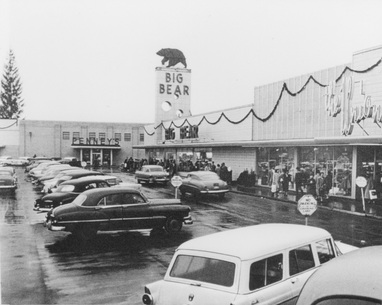 Circa 1950, the Town & Country Shopping Center is among the nation's first regional shopping centers
.
Circa 1950, the Town & Country Shopping Center is among the nation's first regional shopping centers
.
In 1949, local developer Don M. Casto unveiled one of the nation's first regional shopping centers, The Town & Country Shopping Center, also referred to as "The Miracle Mile." It has prospered throughout the decades, has had two major remodels, and has added numerous retail establishments over its 75+ years.
